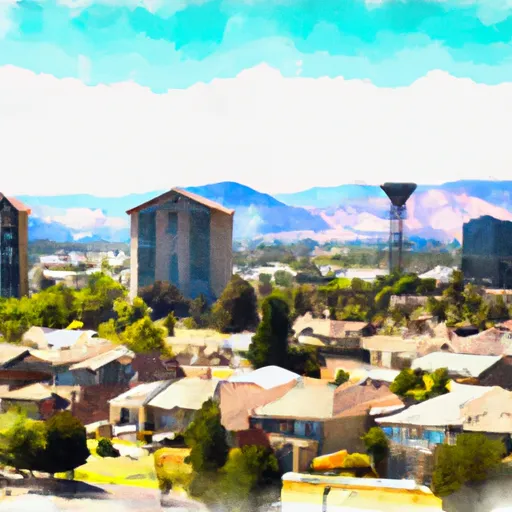-
 Snoflo Premium
Snoflo Premium
Get unlimited access to all our content
With no Ad interruptions! - Start Your Free Trial Login with existing account
Smartville
Eden Index
Climate
10.0
•
Recreation
5.2
•
Community
•
Safeguard
5.8/10

Smartville is a small town located in Yuba County, California. The climate in Smartville is classified as Mediterranean, characterized by hot, dry summers and mild, wet winters. Summers are typically sunny with temperatures ranging from the mid-80s to low 100s Fahrenheit, while winters are cooler with temperatures averaging in the 50s.
The town's hydrology is primarily influenced by the Yuba River, which runs nearby. The river provides opportunities for boating, fishing, and swimming. Additionally, Smartville is surrounded by beautiful lakes and reservoirs, including Englebright Lake and Collins Lake, offering further water-based recreation such as kayaking, water skiing, and paddleboarding.
Outdoor enthusiasts can also explore the surrounding rugged landscapes, including the nearby Sierra Nevada Mountains, which provide ample opportunities for hiking, mountain biking, and camping. The region is home to numerous trails, such as the Yuba Rim Trail, which offers stunning views of the Yuba River Canyon.
In summary, Smartville, California offers a Mediterranean climate, influenced by the nearby Yuba River, providing a range of outdoor recreation opportunities including water-based activities on the river and nearby lakes, as well as hiking and camping in the surrounding mountains.
What is the Eden Index?
The Snoflo Eden Index serves as a comprehensive rating system for regions, evaluating their desirability through a holistic assessment of climate health, outdoor recreation opportunities, and natural disaster risk, acknowledging the profound impact of these factors on livability and well-being.
Climate Health Indicator (CHI): 10.0
Smartville receives approximately
954mm of rain per year,
with humidity levels near 63%
and air temperatures averaging around
16°C.
Smartville has a plant hardyness factor of
9, meaning
plants and agriculture in this region tend to thrive here all year round.
By considering the ideal temperature range, reliable water supplies, clean air, and stable seasonal rain or snowpacks, the Climate Health Indicator (CHI) underscores the significance of a healthy climate as the foundation for quality living.
A healthy climate is paramount for ensuring a high quality of life and livability in a region, fostering both physical well-being and environmental harmony. This can be characterized by ideal temperatures, reliable access to water supplies, clean air, and consistent seasonal rain or snowpacks.
Weather Forecast
Streamflow Conditions
Lower Sacramento
Area Rivers
Lower Sacramento
Snowpack Depths
Lower Sacramento
Reservoir Storage Capacity
Lower Sacramento
Groundwater Levels
Recreational Opportunity Index (ROI): 5.2
The Recreational Opportunity Index (ROI) recognizes the value of outdoor recreational options, such as parks, hiking trails, camping sites, and fishing spots, while acknowledging that climate plays a pivotal role in ensuring the comfort and consistency of these experiences.
Access to outdoor recreational opportunities, encompassing activities such as parks, hiking, camping, and fishing, is crucial for overall well-being, and the climate plays a pivotal role in enabling and enhancing these experiences, ensuring that individuals can engage in nature-based activities comfortably and consistently.
Camping Areas
| Campground | Campsites | Reservations | Toilets | Showers | Elevation |
|---|---|---|---|---|---|
| Bullards Lakeshore | 60 | 2,082 ft | |||
| Sly Creek | 23 | 3,554 ft | |||
| Frenchy Point | 9 | 1,958 ft | |||
| Beale AFB Military | None | 155 ft | |||
| Loafer Creek - Lake Oroville State Rec Area | None | 951 ft | |||
| Peninsula - Folsom Lake State Rec Area | 100 | 792 ft | |||
| Garden Point | 20 | 1,945 ft | |||
| Nevada County Fairgrounds | None | 2,455 ft | |||
| Dark Day | 15 | 1,955 ft | |||
| Bidwell Canyon - Lake Oroville State Rec Area | 75 | 941 ft |
Nearby Ski Areas
Catastrophe Safeguard Index (CSI):
The Catastrophe Safeguard Index (CSI) recognizes that natural disaster risk, encompassing floods, fires, hurricanes, and tornadoes, can drastically affect safety and the overall appeal of an area.
The level of natural disaster risk in a region significantly affects safety and the overall livability, with climate change amplifying these risks by potentially increasing the frequency and intensity of events like floods, fires, hurricanes, and tornadoes, thereby posing substantial challenges to community resilience and well-being.
Community Resilience Indicator (CRI):
The Community Resilience Indicator (CRI) recognizes that education, healthcare, and socioeconomics are crucial to the well-being of a region. The CRI acknowledges the profound impact of these elements on residents' overall quality of life. By evaluating educational resources, healthcare accessibility, and economic inclusivity, the index captures the essential aspects that contribute to a thriving community, fostering resident satisfaction, equity, and social cohesion.

